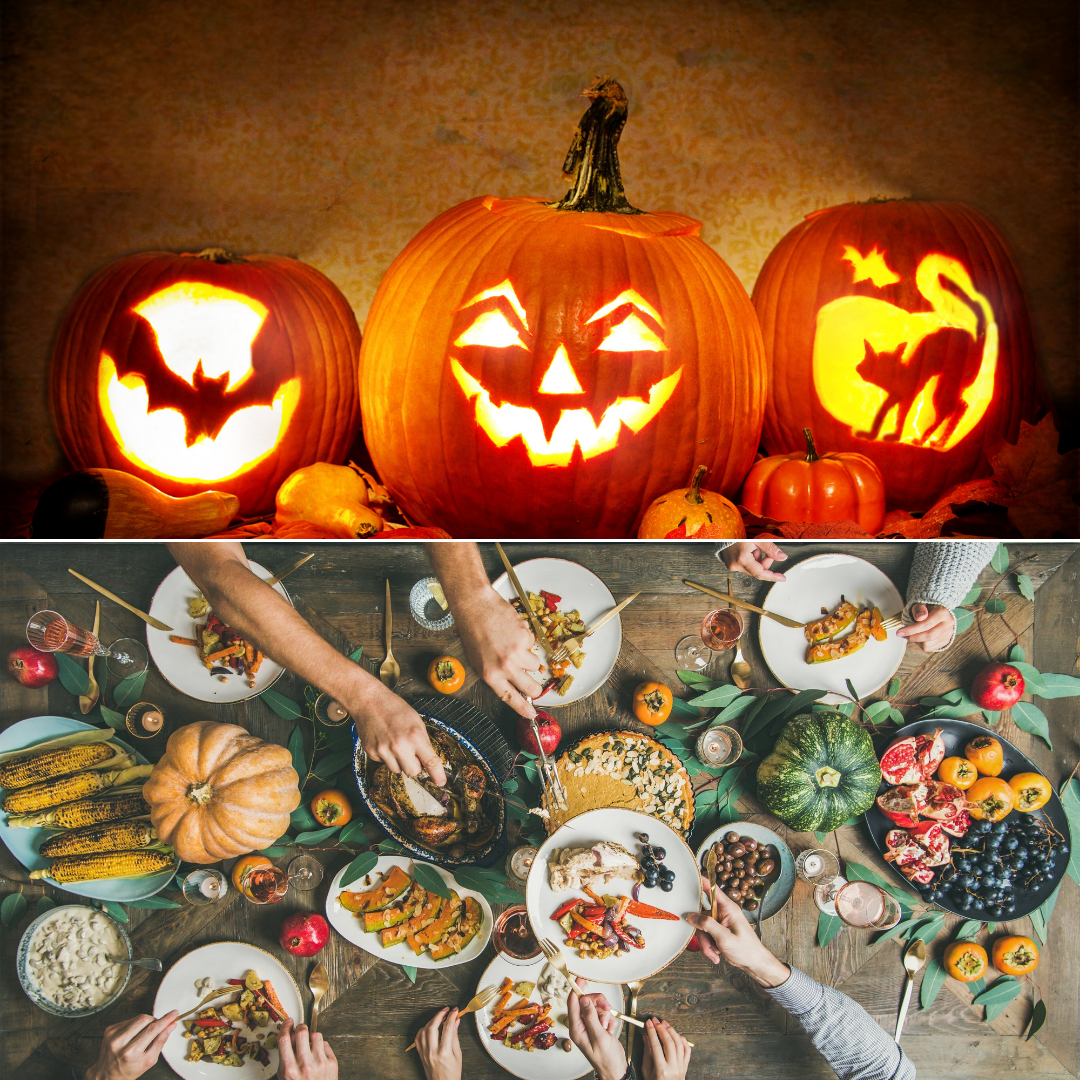
Excitement grows as we approach Halloween and Thanksgiving. As fun as they can be, these holiday traditions often tend to be wasteful, and so the way we celebrate has to change for the health and safety of our planet. We often get caught up in the moment where we forget how our actions can impact the environment.
According to the Natural Resources Defense Council, 200 million pounds of turkey meat go to waste every year because of Thanksgiving. Not only is this concerning waste-wise, but also the resources used in turkey production is substantial. Turkey production equates to driving 800,000 cars from Los Angeles to Florida or supplying water to New York City for 100 days!
Halloween is no exception either. Plastics and toxic chemicals are the scariest things found in Halloween decorations, costumes, or candy wrappers—all of which often end up in the trash after a single use. Pumpkins also use a lot of resources.10 million pumpkins are grown every year in the U.K., and 95% of those are used at Halloween and then thrown away, leading to 18,000 tonnes of food waste created.
But it’s never too late to change our habits! Here are some tips on how to celebrate Thanksgiving and Halloween sustainably:
For Thanksgiving:
- Know your dishes and prepare a shopping list. Check your kitchen inventory and only purchase things you need.
- Count how many people are joining over to quantify the amount of each food you should be preparing. Coordinate with your guests if they’re bringing something to eat to avoid making too much.
- Make plans on how to deal with leftovers. Ask guests if they want to take some of the food home. Be creative about how you’re going to use up what is left.
- Almost anything can be frozen. If you won’t eat the leftovers within a couple of days, it’s better to freeze them with labels. That way you have the option of pre-made meals when you don’t feel like cooking at all.
- Prepare more vegan options and reduce your carbon footprint by eating less/no meat.
- Use foraged items instead of plastic decors. Some examples include pinecones, fall leaves, acorns in mason jars, etc.
- Are you having a kitchen crisis? Check out these 5 ways to revive food.
For Halloween:
- Minimize your energy use by turning off lights to make your house spooky.
- Make D.I.Y. decorations and costumes or buy second-hand!
- When having parties, use the regular dishes you have at home if possible.
- Make your own treats or buy the ones with minimal packaging or that are locally produced.
- Use something you already have where you can place your trick-or-treat goodies in. Examples are tote bags, pillowcases, or a bucket. The options are endless!
- When buying pumpkins, get them from the farmer’s market. Instead of throwing them out, turn them into delicious uses like pumpkin seeds, puree, pie, soup, muffins, etc. If not, make sure to compost them!
- Reuse everything for future fun events. Keep them all in one box for an easier find next time.
Our goal is to help reduce waste, it’s unnecessary to produce so much waste for celebrations. Keeping in mind these tips will help minimize your carbon and material footprint and save you money in the long run.
Join our Zero Waste Week challenge from October 18-24 to get yourself into rethinking your waste and have a chance to win awesome prizes and sustainable swags!